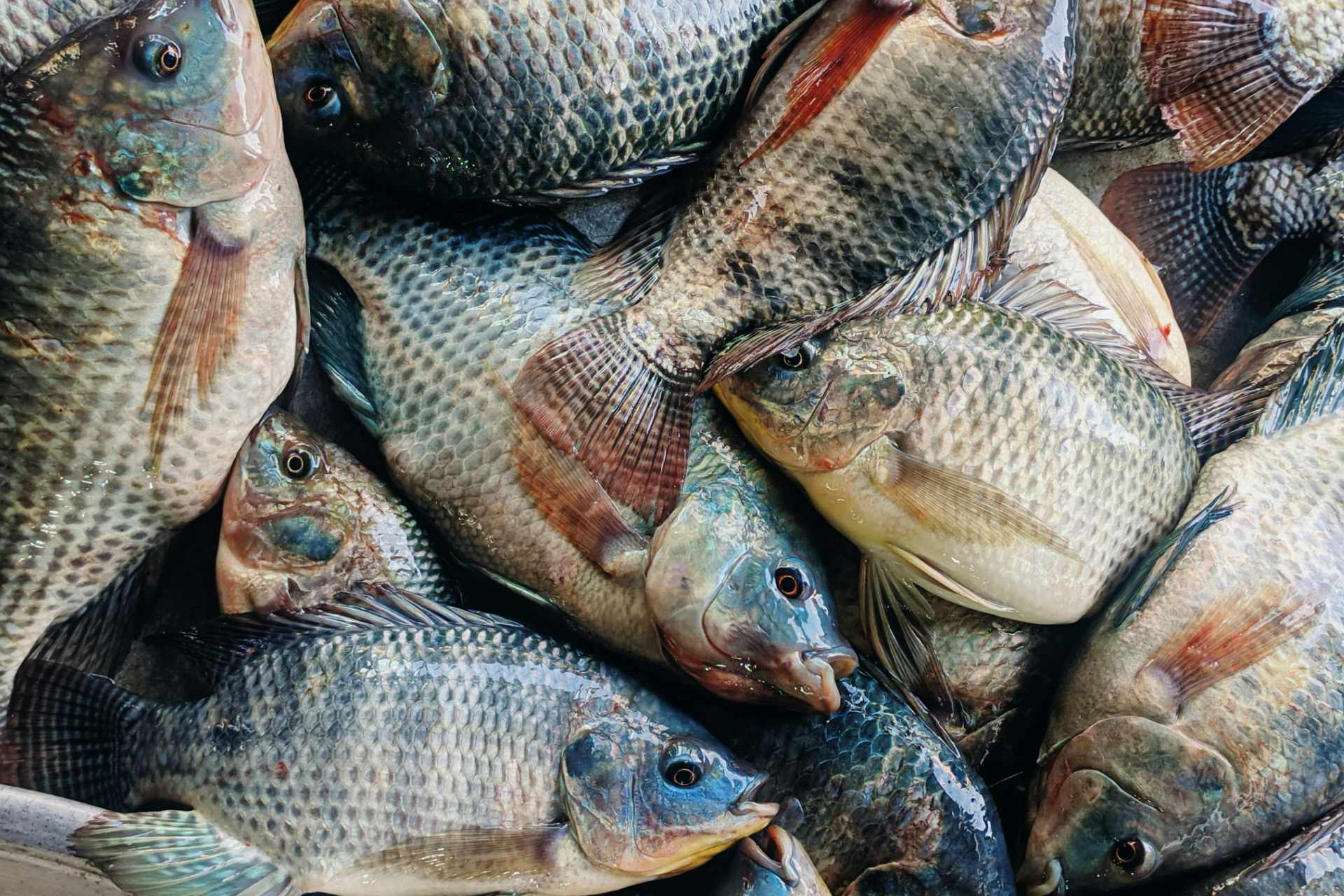
After years of experimenting with fish feed, we’ve learned that nothing stays the same in aquaculture.
Techniques evolve, and old methods get left behind. Enter black soldier fly larvae—a revolutionary protein source that’s turning the world of fish farming upside down. Forget the days of traditional fish meal.
If you’re serious about faster fish growth, it’s time to embrace this game-changer. Like everything else, fish feed has evolved, and those who adapt will thrive.
Ready to break away from the old and dive into a future where fish grow faster and healthier than ever before? Let’s get started.
Fish Feed with Black Soldier Fly Larvae for Faster Fish Growth
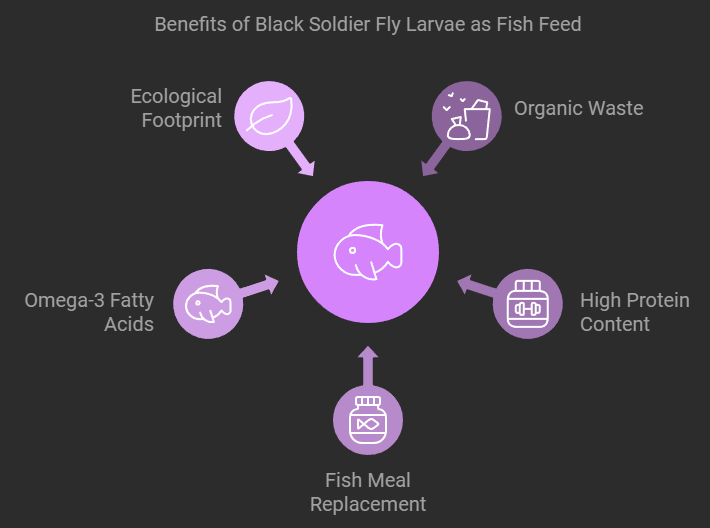
Let’s face it, the world of fish feed has come a long way.
Traditional fish feed might have had its day, but aquaculture now demands sustainable, cost-effective, and efficient alternatives.
As fish farming grows, so does the need for more environmentally conscious solutions.
Farmers are increasingly searching for eco-friendly fish feed that not only boosts fish growth but also helps manage organic waste.
Sounds like a win-win, right? Enter black soldier fly larvae—an unexpected hero in the field of sustainable aquaculture feed.
The conventional reliance on fish meal is becoming a bit of an outdated strategy.
Not only is it costly, but it also puts an enormous strain on wild fish populations, which are already dwindling.
That’s where insect-based fish feed comes in, providing an innovative, sustainable fish feed alternative that doesn’t sacrifice nutrition.
Black soldier fly larvae, in particular, are shaking things up by converting organic waste into a protein-rich feed source, making them perfect for aquaculture.
We’re not just talking about sustainability here.
Black soldier fly larvae are also a key player in cutting down the environmental impact of fish feed production.
Their larvae can transform waste into valuable biomass, reducing landfill waste while feeding farmed fish.
It’s a beautiful example of circular farming.
With growing concern over sustainability, it’s high time we explore these alternatives in fish feed to maintain healthy aquaculture ecosystems.
Black Soldier Fly Larvae as a High-Protein Fish Feed
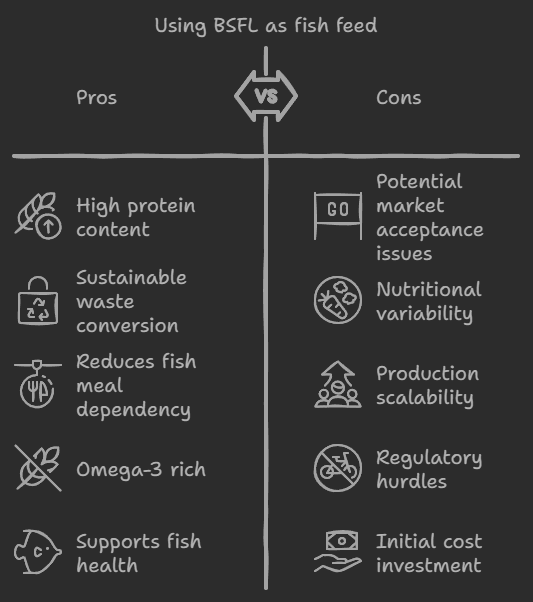
If you’re not familiar with black soldier fly larvae yet, let me introduce you to these little powerhouses.
Black soldier fly larvae, or BSFL, are incredibly efficient at converting organic waste into high-protein feed.
With protein content that rivals traditional fish meal, they are quickly becoming a go-to in aquaculture feed solutions.
In fact, they contain about 40-45% protein on a dry matter basis, making them one of the best fish feed alternatives available.
What makes black soldier fly fish feed so exciting is its potential to replace large amounts of fish meal, a product that has historically been essential for aquaculture but comes with environmental costs.
Black soldier fly larvae thrive on waste materials like kitchen scraps and agricultural by-products, turning what was once considered trash into treasure.
This results in a protein-rich fish feed that supports fish health and growth without depleting our oceans.
Moreover, black soldier fly larvae are naturally rich in omega-3 fatty acids, especially when raised on fish offal.
These nutrients are crucial for the overall health of fish, enhancing everything from growth to immunity.
By incorporating black soldier fly larvae into fish diets, we can meet fish farming’s high protein demands while minimizing ecological footprints.
It’s a simple yet brilliant solution that offers both sustainability and nutritional benefits.
Nutritional Benefits of Fish Feed Made from Insects
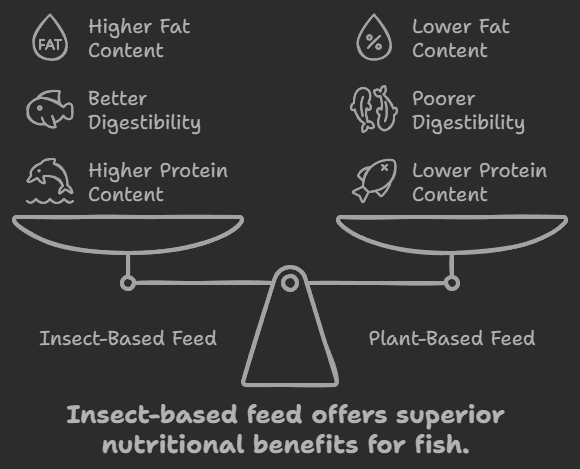
When it comes to fish nutrition, black soldier fly larvae offer more than just high protein.
These larvae are also packed with essential amino acids, fats, and minerals that fish need to thrive.
Compared to traditional plant-based feeds, insect-based fish feed provides a more balanced nutritional profile that mimics the diet fish would naturally consume in the wild. The result? Healthier fish and faster growth rates.
Insect-based fish feed has a unique ability to deliver digestible proteins, which are crucial for the rapid growth of fish.
BSFL’s fat content, which is around 30-35%, provides the necessary energy fish require for healthy development.
On top of that, they offer an optimal combination of calcium, phosphorus, and other minerals that promote bone development and overall health in fish.
We all know that fish health supplements can get expensive, but using black soldier fly larvae in fish feed is a cost-effective way to provide these essential nutrients.
Plus, it helps reduce the need for artificial supplements, which fish farmers often rely on to ensure their fish are getting proper nutrition.
In this sense, black soldier fly larvae offer a natural, wholesome alternative to standard fish feeds while maintaining the necessary nutritional balance.
Comparison of Black Soldier Fly Larvae with Traditional Fish Meal
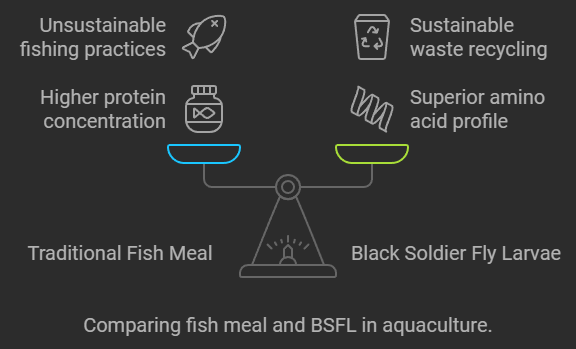
Let’s talk fish meal.
For years, it’s been the gold standard in aquaculture feed, but it comes with its own set of issues.
From overfishing to high costs, traditional fish meal just isn’t sustainable in the long term.
On the other hand, black soldier fly fish feed offers a much-needed solution by providing similar, if not superior, nutritional benefits without the environmental cost.
In terms of protein content, black soldier fly larvae hold their own against fish meal.
As mentioned earlier, BSFL can contain up to 45% protein, while fish meal typically ranges from 60-70%.
Though fish meal may have a slight edge in protein concentration, BSFL makes up for it with its unique amino acid profile, which is more digestible for many fish species.
Another point of comparison is sustainability.
While fish meal relies on the capture of wild fish, black soldier fly larvae feed on organic waste, reducing the need to harvest marine resources.
Not only does this make black soldier fly larvae a more sustainable option, but it also helps alleviate pressure on ocean ecosystems.
For fish farmers looking to reduce their carbon footprint, BSFL is an excellent fish meal alternative that doesn’t compromise on fish nutrition.
Production Techniques for Black Soldier Fly Larvae as Fish Feed
Producing black soldier fly larvae as fish feed isn’t as complicated as it might seem.
These insects are incredibly efficient at converting organic waste into protein, and setting up a black soldier fly larvae production system is straightforward for most farmers.
All you need is organic waste—anything from kitchen scraps to animal manure—and the larvae will do the rest.
One effective technique for raising BSFL is to use a self-harvesting system, where the larvae crawl out of the waste material once they reach the pre-pupae stage.
Farmers can then collect the larvae, dry them, and mix them into fish feed formulations.
This process is not only low-cost but also scalable, allowing fish farmers to produce a consistent supply of protein-rich feed.
Interestingly enough, black soldier fly larvae production also thrives under diverse conditions.
They can be raised in everything from small household setups to large commercial operations.
With the right temperature and waste supply, BSFL will flourish, making it an accessible option for fish feed production, whether you’re a small-scale farmer or running a larger aquaculture business.
Environmental Advantages of Insect-Based Fish Feed
We all know that sustainability is becoming more important by the day. One of the biggest environmental advantages of black soldier fly fish feed is that it helps reduce organic waste.
Every year, millions of tons of food waste end up in landfills, contributing to methane emissions and environmental degradation.
By using this waste to feed black soldier fly larvae, we’re not only creating valuable protein but also reducing landfill waste.
Black soldier fly larvae can also process a wide range of organic materials, including agricultural by-products and food scraps.
This makes them a perfect fit for circular farming systems, where waste is repurposed into something valuable, like fish feed.
The larvae break down waste materials efficiently, converting up to 25% of organic matter into protein and other useful nutrients.
Oh, and speaking of which, let’s not forget that insect-based fish feed produces fewer greenhouse gas emissions compared to traditional feed options.
By reducing our reliance on fish meal and minimizing waste, BSFL feed significantly lowers the carbon footprint of fish farming operations.
It’s a simple, effective way to make aquaculture more eco-friendly while ensuring the health and growth of fish.
Enhancing Fish Growth with Black Soldier Fly Larvae Feed
It’s no secret that fish farmers are always looking for ways to enhance growth rates.
Black soldier fly larvae are a fantastic addition to any fish feed strategy because they offer the perfect blend of protein, fats, and minerals to promote rapid growth.
Studies have shown that fish fed with BSFL-based diets experience faster weight gain and higher survival rates compared to those on traditional feeds.
The secret lies in the larvae’s digestibility.
Fish can easily process the nutrients in black soldier fly larvae, allowing for efficient feed conversion.
This means that less feed is required to produce the same amount of fish, which ultimately lowers costs for fish farmers.
In fact, fish fed with BSFL have been shown to have improved feed conversion ratios, leading to higher yields in a shorter time frame.
By providing the right balance of nutrients, black soldier fly fish feed can significantly boost fish growth while maintaining overall health.
For fish farmers looking to maximize their production, BSFL feed is an excellent option that promotes both faster growth and better feed efficiency.
Cost-Effectiveness of Using Black Soldier Fly Larvae in Aquaculture
Cost is always a factor when it comes to fish farming, and black soldier fly larvae offer a cost-effective solution for fish feed production.
Because BSFL can be raised on organic waste, they significantly cut down on feed costs.
Farmers no longer need to rely on expensive fish meal or other costly ingredients to create high-quality feed for their fish.
Producing black soldier fly larvae is relatively inexpensive and requires minimal infrastructure.
With a small investment in waste management systems, fish farmers can quickly scale up their BSFL production, creating a steady supply of protein-rich fish feed at a fraction of the cost of traditional options.
In fact, many farmers find that incorporating BSFL into their feed reduces their overall feed costs by 30-50%.
In any case, let’s not forget that the potential for revenue extends beyond just fish feed production.
Farmers can also sell excess larvae or even BSFL-based products, creating an additional income stream.
This makes black soldier fly larvae a financially viable option for both small and large fish farms looking to increase their profitability.
Replacing Fish Meal with Black
Soldier Fly Larvae for Improved Sustainability
Replacing traditional fish meal with black soldier fly larvae is one of the most effective ways to improve sustainability in aquaculture.
As we’ve mentioned, fish meal production places immense pressure on wild fish populations, and it’s simply not a sustainable long-term solution.
Black soldier fly larvae, on the other hand, offer a renewable, eco-friendly alternative that doesn’t rely on overfishing.
Moreover, black soldier fly larvae production uses far fewer resources compared to fish meal production.
Raising BSFL requires minimal water and land use, making it a more sustainable option for large-scale fish farming.
In addition, because the larvae feed on organic waste, they help recycle materials that would otherwise contribute to pollution and landfill waste.
In a world that’s increasingly concerned with sustainability, replacing fish meal with black soldier fly larvae is a no-brainer.
Fish farmers can continue to meet the high protein demands of their fish while drastically reducing their environmental impact.
It’s a solution that benefits both the planet and the aquaculture industry.
Optimizing Feed Conversion Ratios with Black Soldier Fly Larvae
Feed conversion ratio (FCR) is a critical factor in fish farming, as it determines how efficiently fish convert feed into body mass.
With black soldier fly larvae, optimizing FCR becomes much easier.
BSFL-based diets have been shown to significantly improve FCR compared to traditional fish meal diets, meaning fish grow faster while consuming less feed.
This improvement in FCR translates to lower feed costs for farmers, as less feed is needed to produce the same amount of fish.
In aquaculture, where feed costs can account for up to 50% of total production expenses, optimizing FCR with black soldier fly larvae is a game-changer.
Fish farmers can maximize their yields while keeping their costs in check.
Interestingly enough, black soldier fly larvae also promote better overall health in fish, leading to fewer losses and higher survival rates.
This further enhances the efficiency of fish farming operations, making BSFL a highly attractive option for farmers looking to boost their productivity while minimizing their costs.
In a world where sustainability and efficiency are key, using black soldier fly larvae as a fish feed alternative is not just smart—it’s the future.
We’ve explored how this eco-friendly, protein-packed option boosts fish growth, cuts down on waste, and outshines traditional fish meal in both cost and environmental impact.
Whether you’re a fish farmer or just passionate about sustainable aquaculture, black soldier fly larvae offer a solution that benefits your fish, your wallet, and the planet.
If you’re ready to embrace this innovative approach, why not dive deeper into the conversation?
Leave a comment below, share this post, and don’t forget to subscribe to our YouTube channel Radical Farming for more exciting content about sustainable farming practices.